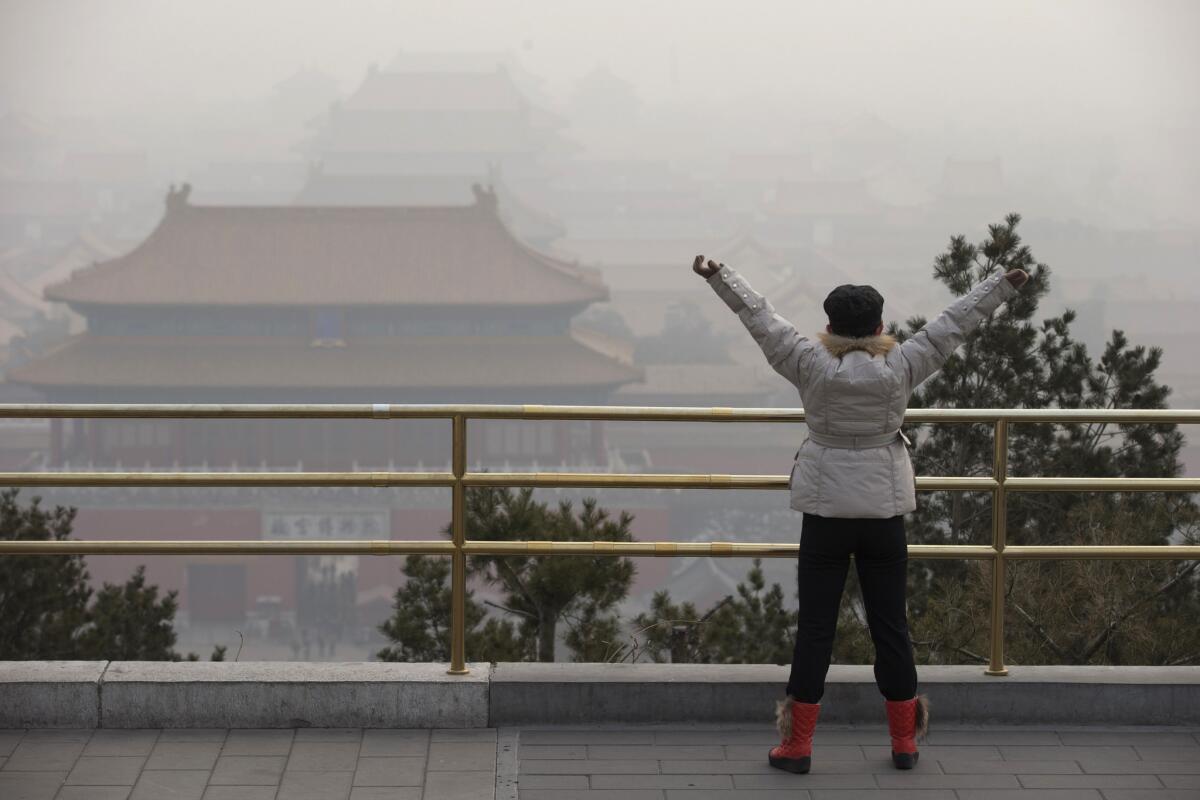What’s in Beijing smog? 1,300 microbe species, study finds

As if it weren’t bad enough to breathe already, a new study has detected traces of more than 1,300 species of microbes in some of Beijing’s most polluted air.
Most of the microbes detected by scientists were harmless bacteria that are commonly found in soil.
But the study found some bacteria and fungi that are known to cause allergies and respiratory diseases. Some of those pathogens were found in higher proportions in air samples collected on the smoggiest days.
Chinese researchers conducted the analysis because they were familiar with the health consequences of air pollution and wanted to know if it contained allergens and pathogens that could be adding to the problem.
“The purpose of our study was to add to our understanding of the microbes we inhale every day,” said Ting Zhu, a biologist at Tsinghua University in Beijing who authored the scientific paper with seven other researchers. To do so, they took measurements during a five-day episode of severe smog in Beijing in January 2013.
The analysis focused on particulate matter, including tiny particles known as PM2.5 that can burrow deep into the lungs and are blamed for respiratory problems such as “Beijing cough” as well as heart and lung illnesses and premature deaths.
Scientists took air samples from a university rooftop over a week when daily average readings of fine particulate matter surpassed 500 micrograms per cubic meter -- more than 20 times higher than World Health Organization guidelines.
Scientists used filters to collect particulate matter in the air, then extracted and sequenced the DNA in the samples to identify 1,315 microbial species, mostly bacteria. They also detected fungi and viruses, though in smaller numbers.
The microorganisms detected in Beijing’s air were largely similar to those found in past surveys, said Norman Pace, a microbiologist at the University of Colorado Boulder who has analyzed airborne microorganisms in the New York City subway system (and found nothing worrisome).
“I see no microbes of particular public health concern,” Pace said, adding that the smog itself is what is deadly.
Though past studies have taken inventory of airborne microbes in other cities such as Milan, Italy, Zhu said this latest research was the first to use a DNA sequencing technique that could pinpoint individual species, including potential allergens and pathogens.
One limitation of that method, Zhu said, is that “we cannot know for sure -- other than identifying the sequences -- if the microbes were actually in there, and most importantly, still viable.”
“I think it is too early to make too many conclusions about the health effects of the airborne microbes,” Zhu said, adding that he hoped the study would spur further research that “will eventually lead to better understandings of the microbes in PM pollutants and their health effects in many different places.”
Twitter: @tonybarboza






